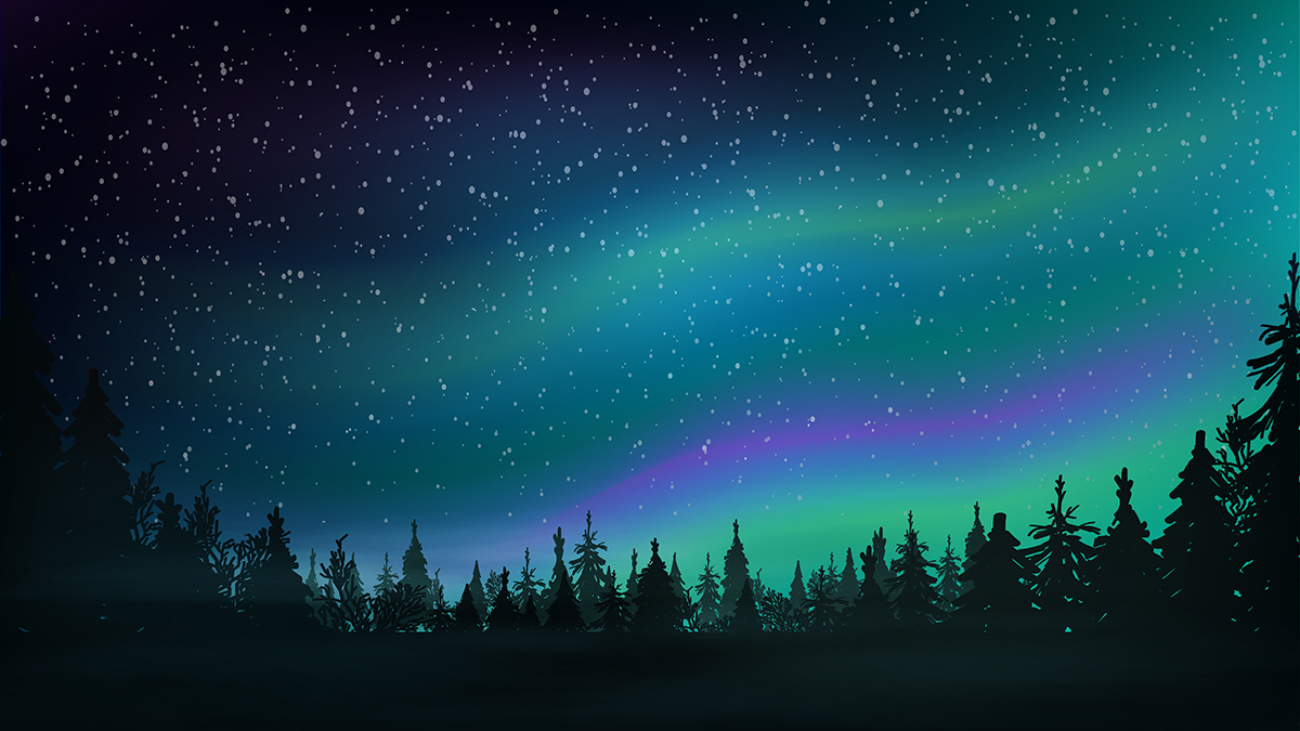While we were writing up the article on the All-Sky Camera, an astronomer here at the Dominion Astrophysical Observatory mentioned that the DAO owned an all-sky camera, which was used to determine the amount of cloud cover on a potential observatory site. A search of the facility didn’t turn it up (Ed note, July 18th: Stay tuned! We found it!), but it did get us thinking about some of the more serious applications of All-Sky photography. A quick search on the Internet led to various sites, mostly in the northern areas of Alaska and Scandinavia, where all-sky camera networks are being used to observe the aurorae.
What Are Aurorae?
You probably know aurorae by its more famous name: the Northern Lights. If you’ve ever seen a neon sign (like the “No Vacancy” sign on a motel) then you’ve basically seen how the aurorae work. The reason a neon sign glows is because an electric current is being passed through a gas in a tube; the current makes the gas glow. Particles from the sun are constantly being blown off the surface of the sun by huge solar flares. These particles, which are charged and hence act like an electric current, are carried by the solar wind to the Earth, whose magnetic fields funnel these particles to the north and south magnetic poles. When the charged particles come in contact with the Earth’s atmosphere they cause gases in the Earth’s atmosphere to glow just like the neon sign: the result is the Northern Lights.
Why Study Aurorae?
During dark winter nights (in the summer the tilt of the Earth causes a “midnight sun,” making observing impossible), photos taken by All-Sky Cameras (singularly or in a network) are carefully analyzed and used in auroral physics research.
Study of these pictures provides valuable information on the characteristics and behaviour of the magnetosphere (the region of our atmosphere where the Earth’s magnetic field forms a “shell” around our planet). As well, intensity of the auroral phenomenon can be related to sunspot activity on the sun: when the sunspot activity changes abruptly, auroral activity increases.
Solar activity, and the accompanying auroral displays, affects us directly: intense solar fluctuations have been responsible for major power outages (a brilliant blood-red auroral display, seen as far south as the equator, knocked out most of the power in Quebec one night in the ’80’s), are responsible for corrosion of oil pipe lines, and have been connected to longterm worldwide climate changes. Careful study of the aurora, aided by photos from professional All-Sky Cameras, can provide a valuable insight and aid in our understanding of these dramatic effects.
For Further Information…
(University of Calgary’s Institute for Space Research)
(University of Calgary)
(University of Alaska Fairbanks)
(Swedish Institute of Space Physics)
(Finnish Meteorological Institute)
(University of Alaska Fairbanks)
(University of Alaska Fairbanks)
(Finnish Meteorological Institute)
(National Museum of Science & Technology)
All-Sky Camera at the University of Alaska Fairbanks Geophysical Institute. Note the little Christmas lights in the dome over the camera: those were used to provide reference points for the early cameras. Copyright University of Alaska, used with permission
All-Sky Camera developed by the Institute for Space Research at the University of Calgary, on location near Gillam, Manitoba. The unit is remotely controlled in Ottawa, Ontario via satellite link by the CANOPUS Data Analysis Network which is a project of the Canadian Space Agency. Copyright University of Calgary, used with permission. (ISR Photo by K. Berg.)
High resolution auroral image taken by the All-Sky Camera near Gillam, Manitoba. The camera uses a filter to image only specific wavelengths of light. In this case it was using the 557.7 nm {Green} filter which corresponds to one of the primary emissions of the aurora caused by oxygen. False colour is used in the image to enhance detail.Copyright University of Calgary, used with permission. (ISR Data Archives.)
